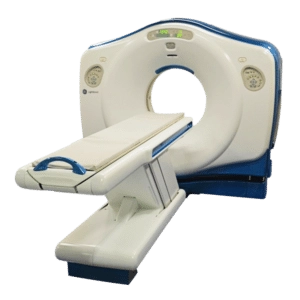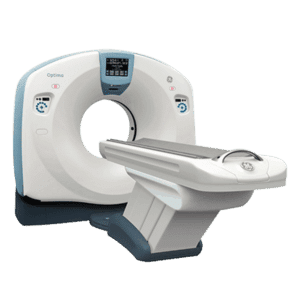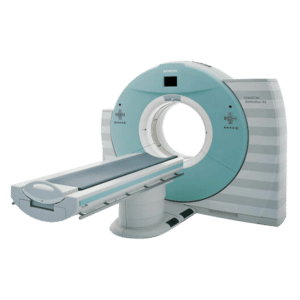CT scans provide three-fourths of Americans’ radiation exposure, when more radiation is used, the clearer the picture becomes
No matter how much we try to avoid it, small doses of radiation seem to be everywhere – from computer monitors, television sets, and airport body scanners to nuclear power plants, smoke detectors, and dental x-rays. While radiation can be used to treat and sometimes even cure certain cancers, it also has a potentially serious downside: the ability to damage DNA and possibly cause cancer in the long run.
Radiation from certain medical-imaging techniques can far exceed levels of radiation found in the environment. CT scans alone are said to provide three-fourths of Americans’ radiation exposure. CT scans are commonly used to detect hidden problems such as broken bones, lung lesions, heart defects, tumors, and more. When more radiation is used, the clearer the picture becomes for the results.
However, researchers are exploring ways to reduce radiation levels from CT scans while still allowing doctors to properly diagnose the patient. The challenge lies in calculating how low the radiation can be set without compromising the result itself. Some doctors are now using computer simulations to help them determine how much to vary radiation doses based on size, gender and other factors that can affect how much radiation is absorbed.
Minimizing Radiation Doses
To help study the lowest effective doses of radiation, scientists at Duke University developed a computer tool that adds “noise” to CT scan pictures; this in turn resembles what would happen if the image were taken using a lower dose of radiation. The pictures are then given to radiologists to determine whether they can detect the physiological abnormality. So far Duke researchers have shown that radiation could be reduced substantially and still allow for detection for certain conditions. However, it is imperative to remember that how well pictures are read also depends in part on the expertise of the radiologist examining the image.
Medical groups are also working to better educate patients and doctors about overuse of CT scans. There are diagnostic techniques that do not use radiation, such as an MRI and ultrasound, which can be used in place of CT scans, though a CT is often preferred in traumatic-wound situations because they can better detect bleeding than an MRI.
Get Started
Request Pricing Today!
We’re here to help! Simply fill out the form to tell us a bit about your project. We’ll contact you to set up a conversation so we can discuss how we can best meet your needs. Thank you for considering us!
Great support & services
Save time and energy
Peace of mind
Risk reduction
Legislation can also be utilized to help restrain, or at least monitor, radiation doses. A new California law now requires radiation doses used for CT scans be recorded in every patient’s medical record and inadvertent overdoses be reported to the state immediately. If such recordings become a nationwide mandate, these records could help doctors and patients keep track of radiation exposures and provide further incentive to steer clear of unneeded imaging.
What Can I Do to Help Myself?
Radiation exposure should be limited whenever possible, so the next time you are recommended to undergo medical imaging, always ask why it is being done; whether the procedure is actually going to make a difference; and if it can wait. Both doctors and patients have a responsibility to carefully consider the risks and benefits before performing and undergoing a radiation-based procedure. Patients are certainly urged to participate in the decisions of their tests and treatments.
Still, when a CT scan is deemed critical, patients should get it. “Those [radiation] doses just are not really significant at this point compared to the benefit of extending lives, saving lives and improving the quality of lives,” says Dr. Ellenbogen of the American College of Radiology, also a radiologist at Southwest Diagnostic Imaging Center in Dallas.
While you can’t go back in time to calculate the doses of radiation received in the past, you can certainly take steps moving forward. For example, many are now only considering procedures such as dental X-rays and additional CT scans if there is a cause for concern – not just for preventive reasons anymore.
Posted by:
Bobby Serros
MRI/CT Specialist
407.438.7847
References:
http://online.wsj.com/article/SB10001424052702303410404577468950681647544.html?_requestid=572078
http://well.blogs.nytimes.com/2012/08/20/medical-radiation-soars-with-risks-often-overlooked/



